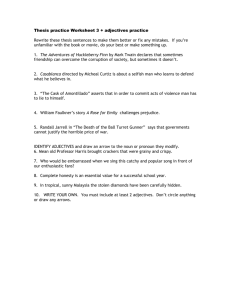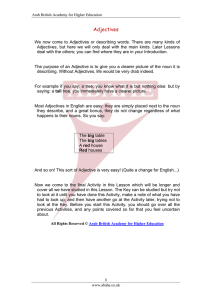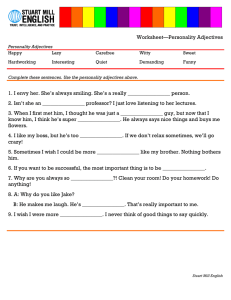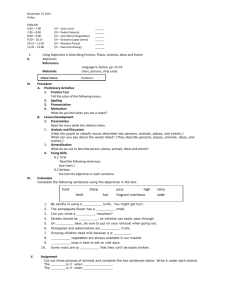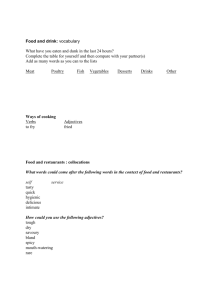Order of Cumulative Adjectives
advertisement
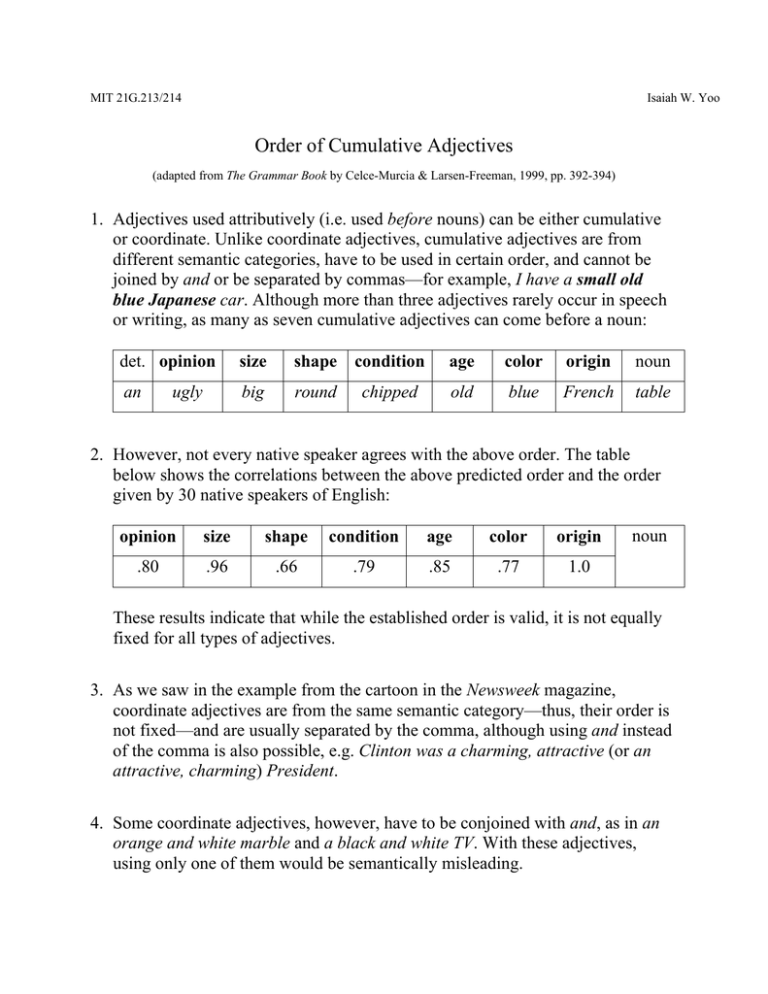
MIT 21G.213/214 Isaiah W. Yoo Order of Cumulative Adjectives (adapted from The Grammar Book by Celce-Murcia & Larsen-Freeman, 1999, pp. 392-394) 1. Adjectives used attributively (i.e. used before nouns) can be either cumulative or coordinate. Unlike coordinate adjectives, cumulative adjectives are from different semantic categories, have to be used in certain order, and cannot be joined by and or be separated by commas—for example, I have a small old blue Japanese car. Although more than three adjectives rarely occur in speech or writing, as many as seven cumulative adjectives can come before a noun: det. opinion size shape condition age color origin noun an big round chipped old blue French table ugly 2. However, not every native speaker agrees with the above order. The table below shows the correlations between the above predicted order and the order given by 30 native speakers of English: opinion size shape condition age color origin .80 .96 .66 .79 .85 .77 1.0 noun These results indicate that while the established order is valid, it is not equally fixed for all types of adjectives. 3. As we saw in the example from the cartoon in the Newsweek magazine, coordinate adjectives are from the same semantic category—thus, their order is not fixed—and are usually separated by the comma, although using and instead of the comma is also possible, e.g. Clinton was a charming, attractive (or an attractive, charming) President. 4. Some coordinate adjectives, however, have to be conjoined with and, as in an orange and white marble and a black and white TV. With these adjectives, using only one of them would be semantically misleading. MIT OpenCourseWare http://ocw.mit.edu 21G.213 / 21G.214 High-Intermediate Academic Communication Spring 2004 For information about citing these materials or our Terms of Use, visit: http://ocw.mit.edu/terms.
